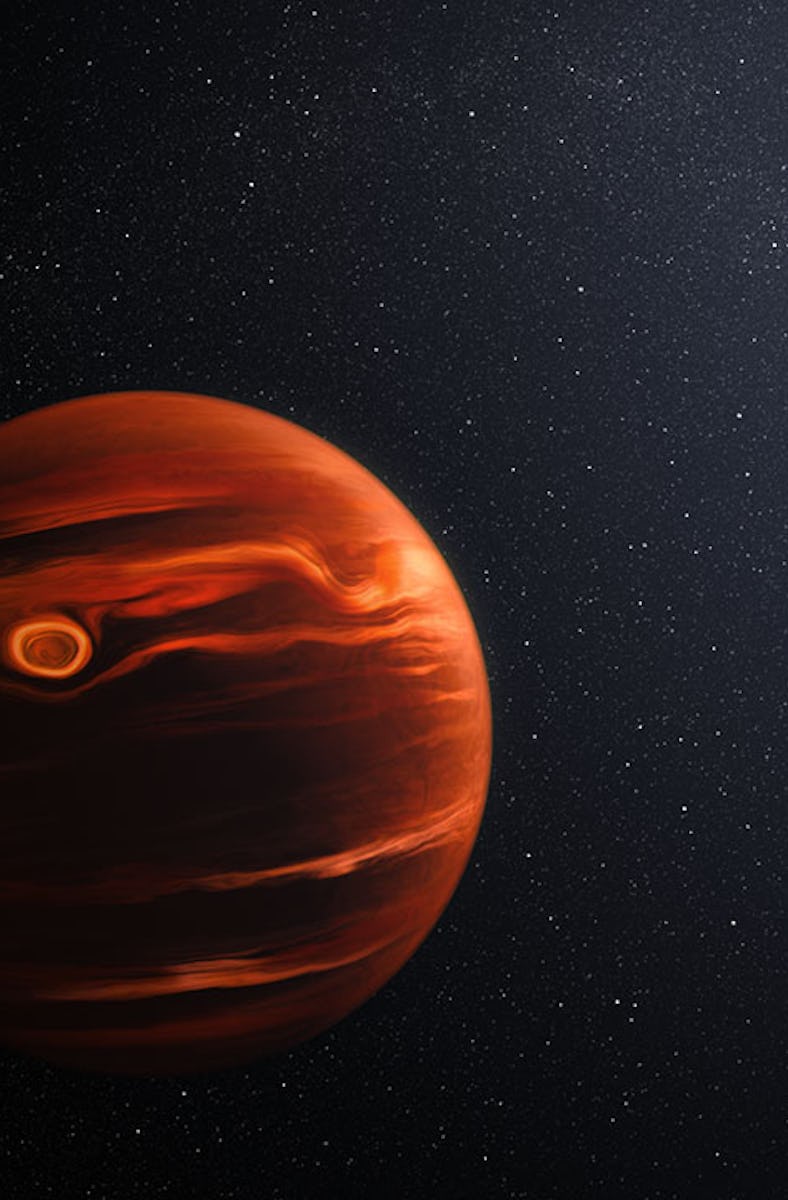The Webb Telescope Just Spotted A Torrential Sandstorm on This Bizarre Planet
Meet VHS 1256 b, a planet that almost became a star, which takes 10,000 years to orbit its two stars.

Astronomers are just beginning to unpack the treasure trove of information that the James Webb Space Telescope (JWST) has siphoned from a nearby world that orbits two stars. So far, they’ve already learned that the clouds of this world rain sand.
These particles are very hot; a description of the new research from JWST’s managerial base at the Space Telescope Science Institute (STScI) in Maryland says that the high atmosphere of exoplanet VHS 1256 b is a place where “temperatures reach a scorching 1,500 degrees Fahrenheit (830 degrees Celsius).” The dust grains are awash in smoky clouds with even smaller silicate particles. In this world, the days are short and the years are unfathomably long, respectively contributing to the churn of the clouds and the much cooler future that it will likely experience.
To obtain this snapshot of the nearby world, located a short 40 light-years from Earth, astronomers used two instruments on JWST — Near-Infrared Spectrograph (NIRSpec) and the Mid-Infrared Instrument (MIRI) — to directly observe VHS 1256 b. It orbits two brown dwarfs, balls of gas that missed the mark for becoming a star, whose identity straddles somewhere between Jupiter and the Sun. VHS 1256 b may itself be a brown dwarf rather than a planet, according to some mass estimates.
JWST’s sensitivity was paired with a fortuitous natural condition of the exoplanet. “VHS 1256 b is about four times farther from its stars than Pluto is from our Sun, which makes it a great target for Webb,” Brittany Miles, research astronomer at the University of Arizona and lead author of the recent work, says in the STScI description. “That means the planet’s light is not mixed with light from its stars.” VHS 1256 b takes about 10,000 Earth years to orbit the stellar pair.
An artist’s depiction of the relative sizes of the Sun, a low mass star, a brown dwarf, Jupiter, and the Earth.
STScI officials say that this isolated light data reveals “clear signatures of water, methane, and carbon monoxide, and provide evidence for carbon dioxide,” and posit that “many more findings are expected as they continue to dig in to Webb’s ‘downpour’ of data.”
“No other telescope has identified so many features at once for a single target,” Andrew Skemer, study co-author and associate astronomer professor at the University of California, Santa Cruz, says in STScI’s statement. “We’re seeing a lot of molecules in a single spectrum from Webb that detail the planet’s dynamic cloud and weather systems.”
There’s much more to learn about this world from the JWST data. “We’ve identified silicates, but better understanding which grain sizes and shapes match specific types of clouds is going to take a lot of additional work,” Miles adds. “This is not the final word on this planet — it is the beginning of a large-scale modeling effort to fit Webb’s complex data.”
For now, astronomers have a portrait of a young brown dwarf in its volatile infancy.